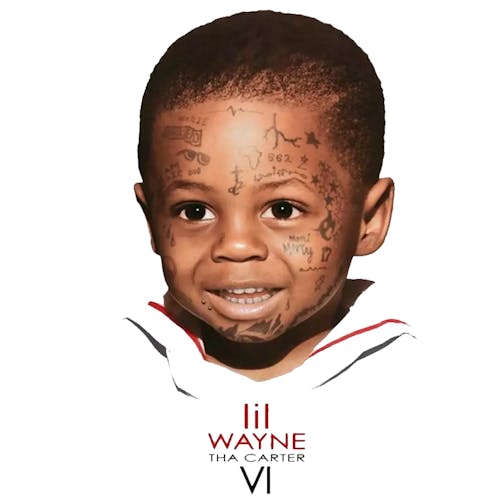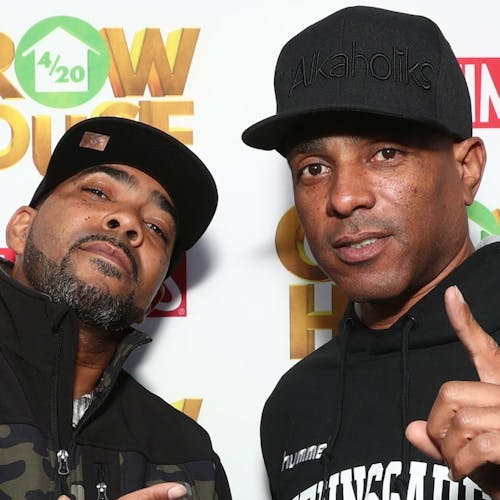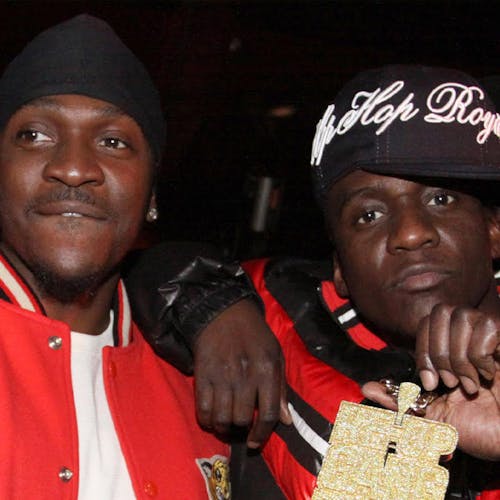
It’s hard to know where you’re going if you don’t know your roots. From the birth of rap through its early days of evolution, much has been written by and about the musical masters of Hip-Hop. In the words of KRS-One, “You must learn.” So beef up the brain and home library with these recommended reads about rhymes and life.
How is it that even news anchors today throw around the term “shout-out?” Why were white suburban kids buying gangsta rap? When did graffiti infiltrate the advertising world? How did a once-subculture transform and influence the dominant culture? It wasn’t always this way. This month’s category: historic.
‘Check the Technique: Liner Notes for Hip-Hop Junkies’ by Brian Coleman
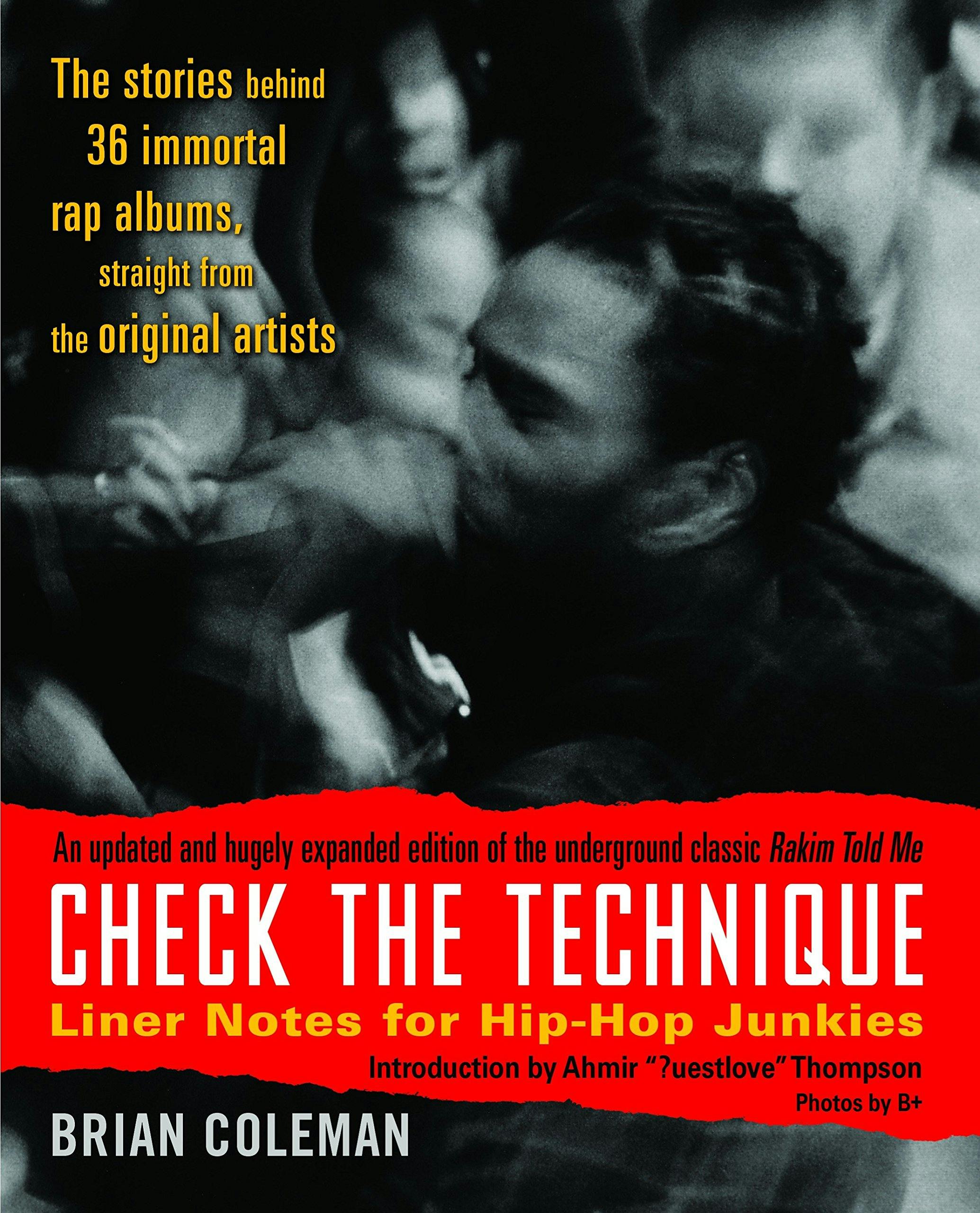
Most classic Hip-Hop records didn’t come with liner notes, but this obsessive fan/veteran journalist author set out to right this injustice. Whether pheening for knowledge about methods to a certain sound engineer’s madness or the real story behind a famous cover shot, Check the Technique is every rap nerd’s dream. Coleman crafted this 528-page masterpiece, then reprinted it with more goodies in later editions. He soon followed it all up with Check the Technique Volume 2: More Liner Notes for Hip-Hop Junkies (Wax Facts Press), which he attests “is better than Vol. 1 in most ways.” Taking us from Biz Markie to X-Clan, Ultramagnetic MCs to Ice Cube, and back over to the Beatnuts, the author proves himself a doctor of rap genealogy. Coleman digs deep, interviewing artists, DJs, producers, and other industry insiders along the way. Perfect for any head who has ever devoured the tiny print inside a cassette or wondered about the people behind the shout-outs.
‘Goin’ Off: The Story of the Juice Crew & Cold Chillin’ Records’ by Ben Merlis
This in-depth oral history of the influential label that launched the likes of MC Shan, Marley Marl, Big Daddy Kane, Master Ace, and more allows the players themselves to tell the story, with an unobtrusive narrator guiding the way. Tracking down the cast of characters involved in this story could not have been easy, but the author’s tenacity and love for the genre pays off. “Sometimes I dumb-lucked into situations,” says Merlis. “I bumped into Cut Chemist at a record store as him and DJ Shadow were playing a 45 of ‘Synthetic Substitution’ by Melvin Bliss. It’s a song that you hear sampled in a lot of Hip-Hop songs by rappers like Biz Markie, which made a lightbulb go off in my head. I end up interviewing Cut Chemist, who is a human encyclopedia of ’80s rap, and using an original Juice Crew flyer of his for the book.” So if you want to know the REAL real deal about Roxanne Shanté and all of those spin-offs, or how labelmate The Genius almost became part of the Juice Crew, or how Bid Daddy Kane ended up in that photo shoot with Madonna for her Sex book, hunker down for deep cuts from the crates, literary-style.
‘Can’t Stop Won’t Stop: A History of the Hip-Hop Generation’ by Jeff Chang
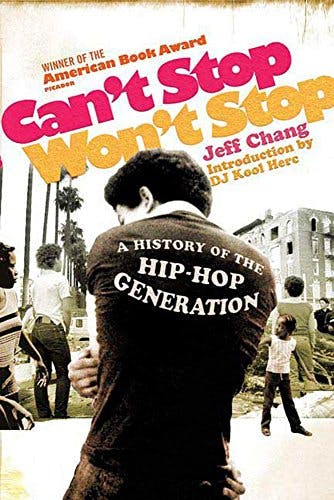
From the beginnings of the Boogie Down Bronx all the way through to the birth of The Source magazine, Chang’s tome offers well-written prose with an eye toward social justice. He forewarns in the intro that this is “a nonfiction history of fiction, some mystery and certainly no prophecy,” leaving room for “many more versions to be heard.” Published in 2005, this classic is required reading for an overview of the culture.
‘Contact High: A Visual History of Hip-Hop’ by Vikki Tobak
Tobak’s high-end hardcover is a must-have full of juicy behind-the-scenes visuals as well as interviews with photographers and essays from HH’s biggest performers. The timeline spans from Tony Tone and Kool Herc to the likes of Tyler the Creator and A$AP Rocky, with creative direction by Fab Five Freddy. The peek at photogs’ contact sheets also spawned the wildly popular exhibit of the same name at the Annenberg Space for Photography and a short doc produced by its foundation. “People always knew what Hip-Hop sounded like but what did it look like?” Tobak says, explaining what drove her to compile this collection. “To look back on certain photographers and iconography and see this vast archive of imagery tells an important, powerful story. Before Hip-Hop became popular worldwide, the photographers in this book were taking pictures and documenting the nascent art form. Digging into these contact sheets allows you to see deeper into the artists and photographers, and Biggie smiling — who doesn't love that?” Tobak continues to curate the traveling exhibition while working on her next two books.
‘Houston Rap Tapes: An Oral History of Bayou City Hip-Hop’ by Lance Scott Walker
Southern Hip-Hop and Houston Rap may be best known for the emergence of the Geto Boys in 1989, but the lineage goes back to Zydeco; the “chitlin circuit” of black-owned nightclubs and venues popularized in the 1930s, necessitated by institutionalized segregation; and a whole bunch of promoters, radio DJs, and battle rappers. Houston Rap Tapes is the companion book to Houston Rap, by photographer Peter Beste and Lance Scott Walker. “Houston music has been overlooked in every genre but the city has produced more Hip-Hop than just about anything else,” says Walker. “This book resulted from more than a decade's worth of interviews with familiar voices and relatively unknown ones, all of whom have been instrumental in building that history.” His extensive interviews with key figures from the Fifth Ward, Fourth Ward, Third Ward, and Southside of Houston reveal a rich history mainstream media has never taken time out to tell.
‘God Save the Queens: The Essential History of Women in Hip-Hop’ by Kathy Iandoli
Veteran journalist Kathy Iandoli makes a good case for how ladies were first on the scene in Hip-Hop, even if they’ve had to fight for recognition. From Kool Herc’s sister, Cindy Campbell, to Debbie D of Us Girls (featured in the movie Beat Street) up through Queen Latifah and Cardi B, the book takes a deep dive into the women behind the scenes and in front of the crowds, weaving in the author’s own experiences with the music industry and even working in a discussion of the word “bitch” in an evenhanded way. “When I wrote God Save the Queens, it was with the intent to finally have a book that discusses the four-decade history of women in Hip-Hop,” says Iandoli. “It was still ironic to me, however, that in order to finally have women held in the same regard as men in Hip-Hop, we had to single them out to highlight their achievements. I’m honored to be the author to have done that.” The book is clearly a personal labor of love designed to set some records straight and belongs on the shelves of anyone interested in Hip-Hop’s unsung heroines.
‘Sneaker Wars: The Enemy Brothers Who Founded Adidas and Puma and the Family Feud That Forever Changed the Business of Sports’ by Barbara Smith
Not about the music but no one can argue about the role these two brands played in the look of classic HH. The story of the two German brothers battling behind the brands is a fascinating read for history buffs ready to bounce down the rabbit hole.
'Ice Cold. A Hip-Hop Jewelry History'
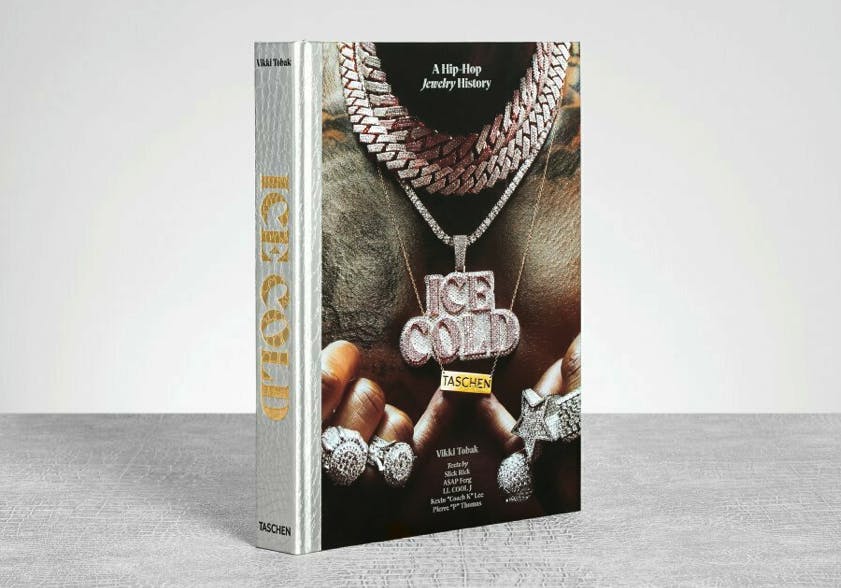
Ice Cold: A Hip-Hop Jewelry History presents the bling culture of rappers and their jewelry. Using40 years of iconic imageryand compelling stories, this visual history shines a light on the world of hip-hop, where mega stars from Run-DMC to Tupac and Jay-Z to Migos and Cardi B flash brilliant custom pieces to show status and personal style.
'The Streets Win: 50 Years of Hip-Hop Greatness' by LL COOL J, Vikki Tobak & Alec Banks
LL COOL J Presents The Streets Win commemorates the birth, rise, and progression of Hip-Hop’s culture and its indisputable impact on American music over the past fifty years. Vikki Tobak, Alec Banks and LL COOL J reveal the journey of this music genre through rarely seen photographs of Hip-Hop from its inception, from block party performances to street shots, parties, sessions at recording studios, and more. The imagery is accompanied by first-person recollections from Hip-Hop’s MCs, B-Boys, graffiti artists, and DJs who share how they fell in love with Hip-Hop, broke into the business, their artistic and personal style inspiration, and their views on Hip-Hop’s culture and music
'Do Remember The Golden Era of NYC Hip-Hop Mixtapes' by Evan Auerbach and Daniel Isenberg
From street corners to corner offices, mixtapes made a huge impact on the music industry and hip-hop culture in New York City during the late ’80s, ’90s, and early 2000s. Mixtapes helped dictate what rap songs were hot in the clubs, on the radio, and in the streets, and they influenced which artists would get signed to record deals. Mixtapes also showcased which DJs had the most skills and creativity, and who had the juice to pull the illest exclusives.
* Banner Image: Photo of Biz Markie Photo by Michael Ochs Archives/Getty Images / Photo of Geto Boys Photo by Michael Ochs Archives/Getty Images / Photo of Queen Latifah Photo by Al Pereira/Michael Ochs Archives/Getty Images

